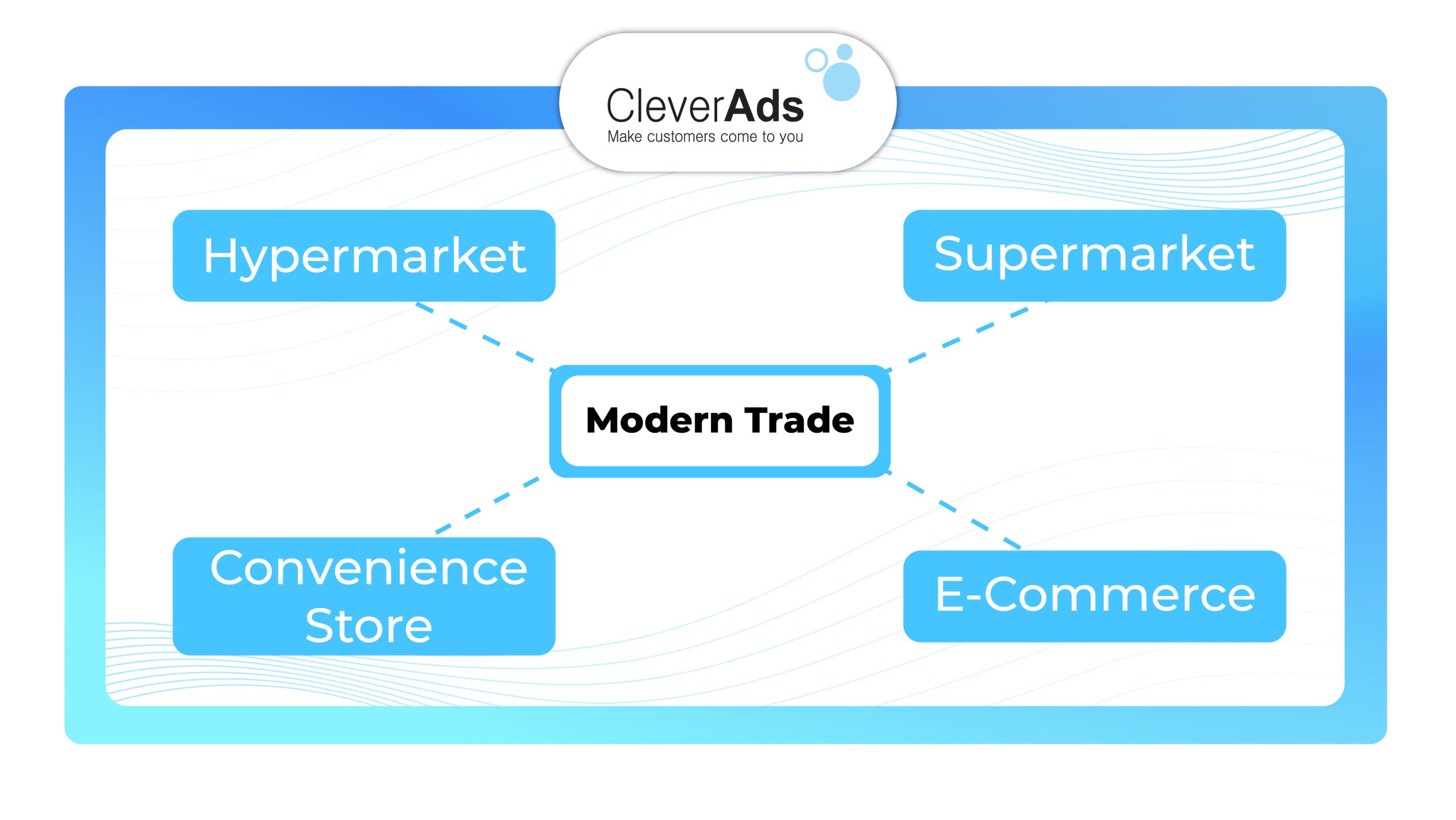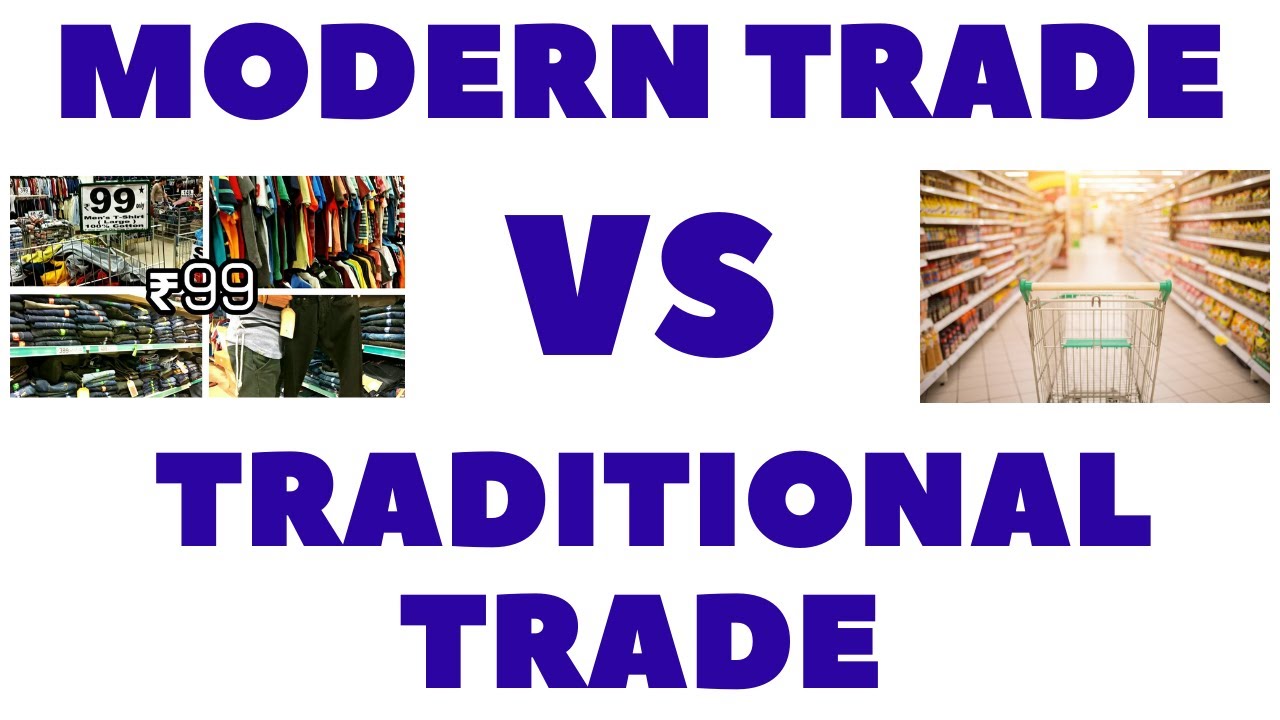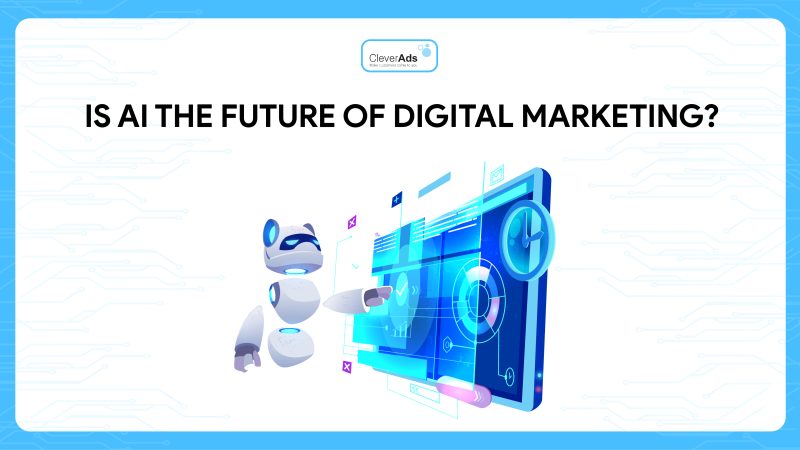Modern Trade: All you need to know about MT

What is MT (Modern Trade)? What is TT (Traditional Trade)? Distinguishing modern and traditional distribution channels, note 5 points when developing MT channels with CleverAds.
1. What is Modern Trade?
MT – Modern Trade (or modern distribution channel) is a term used to refer to present-day sales channels that sell different chains or groups of products. This channel has the participation of professional players such as:
- Hypermarket (Hypermarket): a more advanced channel than a supermarket but not as good as a commercial centre, often with an entertainment area. For example, Aeon and Lotte.
- Supermarket (Supermarket): a self-service retail channel practice in selling food, household goods, etc. For example, Walmart and Mega Market (MM).
- Convenience Store: Focusing on convenience, prices are often higher than in supermarkets, suitable for buying small quantities—for example, Circle K and 7-Eleven.
- E-Commerce (E-commerce): commercial transactions conducted over the internet. For example, Shoppee, Lazada, Tiki, etc.
Distributors in the MT channel are professionally managed inventory and purchasing to the supply chain.

2. Distinguishing MT (Modern Trade) – TT (Traditional Trade)
|
Criteria |
Modern Trade |
Traditional Trade |
| File | Chain with multiple locations run by a trained management team | Primarily a shop run by one owner, family, or employees |
| Decision makers | – Multi-layered decision making process requires time– Head office, in some cases individual branches | – One or two decision makers– Usually the owner or manager |
| Relationship with customers | Limited interpersonal relationships | Focus on the interpersonal relationship between the customer and the retailer |
| Demand | Consistent demand | More seasonal, stop selling certain products when out of season |
| Customer base | Large customer base and service areas that can include thousands of customers | Primarily serving the neighborhood and local community |
| List of brands and packaging | Required and may include lengthy and detailed processes, presentations and documents, prior to receiving approval | Optional – negotiate with owner |
| Product range | Diversity with thousands of products | Mostly limited to hundreds of products |
| Economies of scale | Retailers can bear low prices to sell multiple products, promotional discounts to promote purchases | Commodities are traded mainly at the maximum retail price |
| Out of stock | Less common with improved inventory management | More commonly, replacement based on wholesaler or distributor availability |
| Promotion | – Provide ongoing promotions– Sales promotion programs take place in a centralized and unified manner | – Some promotional prices– Negotiate promotions with individual owners or managers |
| Location | Usually in heavy traffic areas, strategic locations | All locations, but some in crowded areas and small streets |
| Financial Line | – Payment through many forms including bank transfer and cash– Long credit cycle | – Cash– Short credit cycle
– Usually gives credit to customers based on relationships |
| Shopping | – Buy directly from the manufacturer– Mainly centralized shopping
– Ask the sales team to provide detailed information, e.g. sales, pack contributions, trends |
– Mainly buy products through intermediaries, such as distributors and wholesalers– Purchase for a store
– Owners or managers make purchasing decisions |
| Delivery | – Scheduled – delivered on time– Delivery to specific stores or warehouses | – More flexible on delivery time– Delivery to each store |
| Execution time | – Longer but more structured | – Shorter cash flow management |
| Trading equipment | – Requires specialized equipment– Multiple spots available for product display or cross-promotion
– Equipment placement requires detailed negotiation with many stakeholders |
– Standard equipment, e.g. stand– Limited space for equipment placement
– Often use devices such as refrigerators to store personal items, for example: milk, butter |
3. What are the notes when developing the Modern Trade channel?
3.1. Increase interaction with customers with Modern Trade
When using the MT channel to distribute goods, brands need specific tactics to bring products to customers quickly and impressively. Thereby helping sales activities take place effectively and bringing high revenue.
3.2. Understand the product’s position in the market
Understanding the position of the product in the market is very important. Because then businesses can have sales and marketing strategies suitable for each product type and achieve maximum revenue.
3.3. Effectively apply the key shelf strategy
The best way to help products attract customers’ attention is to place them on the key shelf. Therefore, better use of the keys shelf strategy increases the competition of the product compared to other brands.
3.4. Build and manage an effective human resource team
Building and working with a team of sales staff at optimal and effective supermarket systems to help ensure the profit of sales activities.
3.5. Combined with digital communication
In the digital age, customers don’t just “touch” the brand through offline channels. Combining digital tools to create a cohesive, personalized shopping experience helps businesses impress customers, boosting sales.
Combine distribution and communication to increase revenue with Digital Marketing expert CleverAds.



